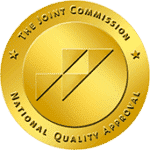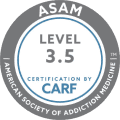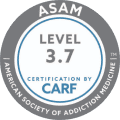What Is Opioid Detox and Withdrawal? Opioid Addiction Treatment in Massachusetts
Opioid detox is an essential treatment for people who are ready to overcome physical dependence on opioids. Detox is the first stage of treatment for opioid use disorder and helps people experience a safe, comfortable, and low-risk withdrawal from opioids, including heroin, fentanyl, and prescription painkillers.
Keep reading to learn more about opioid detox and withdrawal, how it works, and where you can find high-quality opioid addiction treatment in Massachusetts.
What Is Opioid Detox?
Opioid detox is a treatment that helps people recover from physical dependence on opioids. Opioid use disorder remains a serious public health crisis in the United States, where an estimated 1.6 million people suffer from addiction to these drugs. Of the 70,630 drug overdose deaths that occurred in 2019, more than 70% involved opioids, including heroin, fentanyl, and painkillers, reports the CDC.
Opioid detox can help people reduce their risk for a fatal overdose if they become addicted to these drugs and need help quitting. This detox treatment can reduce withdrawal symptoms, including drug cravings, to help patients feel more comfortable as they work toward achieving long-term sobriety.
Most opioid detox treatments are conducted in an inpatient or residential rehab environment where patients can be closely monitored and cared for as they go through withdrawal. Symptoms are controlled with one or more medications for the length of detox, which can last anywhere between four days and several weeks, depending on the severity of the patient’s addiction.
Opioid detox only treats physical dependence on opioids and does not help patients address harmful behaviors or the root causes of opioid addiction. After detox, most patients transition into a drug rehab program to receive therapy and counseling for addiction.
Who Needs Opioid Detox?
Anyone who is physically dependent on one or more opioids needs drug detox to recover from opioid use disorder. Without opioid detox, these individuals are at risk for complications including dehydration, malnutrition, relapse, and overdose.
The physical dependence on opioids develops gradually over time in those who use these drugs regularly for longer than a few weeks—including prescription opioids. All opioids are extremely habit-forming and can lead to physical dependence within a short period. Physical dependence can also develop when someone misuses their prescription drugs, such as crushing and snorting pills or using higher doses than directed.
According to the National Institute on Drug Abuse (NIDA), a person is physically dependent on opioids if they experience withdrawal symptoms when abruptly stopping the use of these drugs. Physical dependence on opioids is also characterized by using these drugs to avoid withdrawal symptoms.
How Long Does Opioid Detox Usually Last?
Opioid detox can last anywhere between a few days and several weeks, based on factors including the type of opioid being used and the severity of the patient’s drug dependence.
According to the World Health Organization (WHO), opioid detox may last four to 10 days for short-acting opioids like heroin and oxycodone and 10 to 20 days for long-acting opioids like methadone. Short-acting drugs leave the body more quickly than long-acting opioids, which is why the detox timeline is shorter for drugs like heroin.
The opioid detox timeline is different for each patient. Factors that can affect the length of opioid detox treatment include:
- Length of time the opioid was used
- Amount of the opioid that was used regularly
- Frequency of opioid use
- Type of opioid that was being used
- Polydrug use (using opioids with other substances such as alcohol or benzodiazepines)
- Metabolism
- Genetics
- Physical health conditions
- Mental health disorders
- Weight
- Age
- Body fat percentage
- Immune system health
- Nutrition status
- Type of detox treatment being administered
All patients are carefully evaluated before opioid detox treatment, which helps doctors formulate the best possible treatment plan based on the above factors. The staff at an opioid rehab center can usually provide patients with a more accurate timeline in regards to opioid detox, so patients know what to expect.
What Symptoms Occur During Opioid Detox and Withdrawal?
Nausea and drug cravings are common opioid detox symptoms that make many people feel hesitant, anxious, and scared about going through opioid withdrawal, which is completely understandable. However, those who suffer from opioid detox can be reassured knowing that the staff at drug detox centers will take the necessary steps to reduce these symptoms.
Symptoms of short-acting opioids usually begin within eight to 24 hours after the last use, while symptoms of long-acting opioids usually begin within 12 to 48 hours after the last use.
Common opioid withdrawal symptoms, according to the WHO and the National Library of Medicine (NLM), include:
- Nausea and vomiting
- Sweating
- Anxiety
- Insomnia
- Agitation
- Fever and chills
- Muscle aches and cramps
- Tearing eyes
- Runny nose
- Excessive yawning
- Dilated (wide) pupils
- Goosebumps
- Abdominal cramping
- Diarrhea
- Opioid cravings
The WHO states that opioid withdrawal may feel like a bad case of the flu and that symptoms are not usually life-threatening on their own. However, symptoms like vomiting and diarrhea that are not controlled may lead to complications such as dehydration.
Each patient experiences opioid withdrawal differently. Some may experience a few mild symptoms, while others may experience all symptoms. Opioid detox focuses on minimizing all symptoms so patients can experience a safe recovery and move on to receive therapy and counseling for addiction.
What Happens During Opioid Detox?
Opioid detox may take place at a hospital, a residential drug rehab center, or an inpatient drug detox center. After being evaluated by addiction treatment professionals who develop a customized detox plan, patients are shown to their rooms so they can immediately begin the opioid withdrawal process.
Patients going through opioid withdrawal are typically encouraged to relax and get plenty of rest during detox, especially given how insomnia is a common and severe symptom. Nurses and doctors check on patients several times a day to track their symptoms. Patients are provided with plenty of water to replenish fluids lost through vomiting, sweating, and diarrhea, as well as vitamins and nutritional supplements that promote a fast recovery and strengthen the immune system.
Mild activities and calming practices like walking, reading, and meditation are recommended, though strenuous exercise and activities are not recommended during opioid detox due to the risk of physical setbacks.
For the duration of opioid detox, various medications are used to reduce withdrawal symptoms and complications, and to keep patients on track with recovery.
What Medications Are Used in Opioid Detox?
Opioid detox centers use a wide range of medications to treat opioid withdrawal symptoms. The types of medications used will vary based on symptoms and their severity levels.
Patients with mild symptoms are usually given symptomatic treatment, which means they are given medications that treat only the symptoms they are experiencing. For example, patients who are mainly experiencing insomnia and anxiety may be given a benzodiazepine, which is a sedative that helps them feel more relaxed, calm, and sleepy. Loperamide may be used to treat diarrhea, promethazine to treat nausea and vomiting, and clonidine to reduce elevated blood pressure.
Patients with moderate to severe symptoms are usually given opioid replacement medications that can reduce all withdrawal symptoms at the same time. These medications are methadone and buprenorphine and work by acting on the same opioid receptors in the brain as other opioids, but without causing pleasurable, euphoric effects.
Methadone
Methadone reduces all opioid withdrawal symptoms, including drug cravings. This medication is beneficial at helping patients detox from long-acting opioids, including morphine and methadone itself.
The NLM states that in opioid detox, some patients may be given oral or intravenous (IV) methadone every four to six hours, without exceeding more than 40 mg of methadone in a 24-hour period. On the third day of detox, doctors determine the appropriate methadone dose needed to minimize the patient’s withdrawal symptoms. Patients may use methadone for several weeks, months, or years, as long as it helps them stay sober and avoid relapse and overdose.
Buprenorphine
Buprenorphine works similarly to methadone in how it reduces opioid withdrawal symptoms and drug cravings. The WHO considers buprenorphine to be the best medication for the management of moderate to severe opioid withdrawal.
Sublingual (under the tongue) buprenorphine may be given to patients in place of methadone at doses of 4 to 12 mg. This medication must be started 12 to 18 hours after the last use of short-acting opioids and 24 to 48 hours after the last use of long-acting opioids. The NIDA reports that patients who are given buprenorphine during opioid detox are 1.82 times more likely to stay in treatment than patients who do not receive this or any other medication for the treatment of opioid dependence.
What Is Medication-Assisted Treatment for Opioid Addiction?
Medication-assisted treatment (MAT) combines the use of medications with counseling and behavioral therapies for the treatment of opioid use disorder. This whole-person treatment approach usually begins after opioid detox has ended. Patients continue to stay on methadone or buprenorphine while learning how to become more independent and live a sober lifestyle.
According to the Substance Abuse and Mental Health Services Administration (SAMHSA), MAT for opioid addiction is shown to produce the following benefits:
- Reduce the risk of opioid relapse
- Improve patient survival
- Reduce the risk of HIV and hepatitis C transmission
- Increase retention in treatment
- Decrease illicit opioid use (such as heroin and fentanyl)
- Decrease criminal activity
- Increase patients’ ability to find and maintain employment
- Improve birth outcomes among pregnant women
Methadone, buprenorphine, and naltrexone are the three medications approved for use in MAT for opioid addiction. Naltrexone blocks the pleasurable and sedative effects of opioids and reduces and prevents opioid cravings. All three medications are effective at helping patients achieve long-term sobriety and recovery from opioid addiction.
Is It Safe for People to Detox From Opioids at Home?
At-home opioid detox is hazardous and dangerous and generally isn’t recommended. The NLM says at-home opioid detox is difficult but may be done using over-the-counter medicines if people have a strong support system in place.
People who attempt to detox from opioids at home often face a greater risk of relapse, given how they won’t have access to medications like buprenorphine or methadone that can reduce withdrawal symptoms and drug cravings. Furthermore, patients’ families and friends may not have the necessary medical experience to determine whether their loved ones are at risk for certain complications.
There are several reasons people may want to do an at-home opioid detox, such as to save money, keep their addiction secret, or because they feel confident they can do it on their own without needing professional treatment.
However, the safest way to recover from opioid dependence is to receive treatment at a drug detox or rehab center where patients can be cared for by experts who can effectively relieve symptoms.
What Are Good Ways to Cope During Opioid Detox?
Opioid detox centers are devoted to helping patients cope with detox so they can experience a fulfilling and stress-free recovery. Insomnia, anxiety, and opioid cravings are among the most difficult symptoms to deal with while going through opioid withdrawal. During opioid detox, patients will have 24-hour support from nurses, counselors, and peers in recovery who can help them manage these difficult symptoms.
Here are effective ways patients can cope with drug cravings, insomnia, and anxiety during opioid detox.
- Read books, go for walks, or talk to other patients to stay busy and avoid thinking about drug cravings. Many treatment centers are equipped with libraries and other activities for patients who need distractions during detox.
- Consume less caffeine, as caffeine can worsen anxiety and insomnia, especially when consumed right before bedtime.
- Spend time outdoors in the sun. Fresh air and sunshine can often help patients relax and clear their heads. Sunshine also helps regulate the body’s circadian rhythm to help people sleep better at night.
- Go to sleep and wake at the same time every day, which can help train the body to fall asleep more easily to combat insomnia.
Is Opioid Detox Covered by Health Insurance?
Some people avoid seeking opioid detox and addiction treatment because they assume they cannot afford it or that treatment is not covered by their health plans. However, opioid detox is considered an essential behavioral health treatment for opioid use disorder and is covered by many health insurance plans.
Patients can contact their insurance providers directly to learn more about their coverage and benefits for opioid detox. Some treatment centers can perform a free insurance benefits check to help patients determine their coverage levels and explore available treatment options.
In the event a patient’s health plan does not cover the cost of opioid detox or a patient doesn’t have health insurance, many treatment centers offer financing options to help patients pay for treatment. Sliding scale fees that adjust the cost of opioid detox to a patient’s income and monthly payment plans are examples of financing options available from treatment providers.
What Happens After Opioid Detox?
Many patients need long-term treatment after opioid detox, as detox treats only the acute symptoms of withdrawal and not long-term symptoms or behaviors related to opioid addiction. After opioid detox, many patients transition into a residential or outpatient rehab program to receive continued therapy for addiction.
Before starting a drug rehab program, patients who complete opioid detox are screened for mental health disorders, including depression and anxiety. Mental illnesses are common among those who suffer from addiction and affect roughly half of all people with a substance use disorder, reports the NIDA. Treating comorbid mental health disorders, known as co-occurring disorders, can reduce the risk for relapse.
Co-occurring disorders are generally treated with dual-diagnosis therapy. This therapy combines the use of medications with behavioral therapies that teach patients how to manage symptoms of their mental illness without resorting to drug and alcohol use.
Other therapies patients may need after opioid detox include:
- Self-help groups like Narcotics Anonymous
- Cognitive-behavioral therapy, which helps patients identify and change harmful behaviors that are driving opioid misuse
- Family behavior therapy, which helps patients reconnect with estranged family members and improve family relationships and dynamics
- Relapse prevention training, which teaches patients how to manage and avoid common triggers like stress, people, and places they associate with opioid use
- Substance abuse education, which educates patients about how drugs and alcohol interact with the brain and can lead to problems with substance misuse
- Contingency management, which rewards patients with prizes and vouchers when they demonstrate positive behaviors, such as submitting a drug-free urine test or attending support group sessions
All drug rehab programs are customized for each patient based on their unique situations and recovery needs.
Where Can I Find Opioid Detox Treatment in Massachusetts?
Patients who live in or near Worcester, Massachusetts, can receive opioid detox treatment at The Haven in New England. Our inpatient and residential detox facility is located at 1369 Grafton Street in Worcester, MA 01604. Contact us today at (844) 933-4145 to learn more about our many addiction treatment services that can help you or your loved one experience a safe and comfortable recovery from opioid dependence and addiction.
Verify Insurance
Let’s get you or a loved one help with a few simple steps.



